Dispelling the Asian American Monolith Myth in U.S. Law Schools
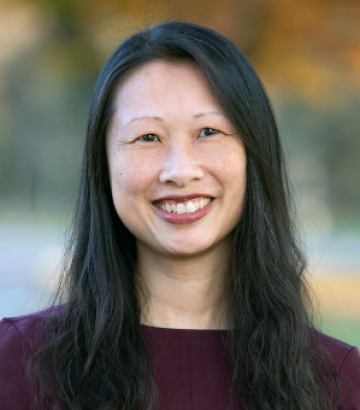
Katrina Lee
Clinical Professor of Law, and Director of Program on Dispute Resolution
The Ohio State University, Moritz College of Law
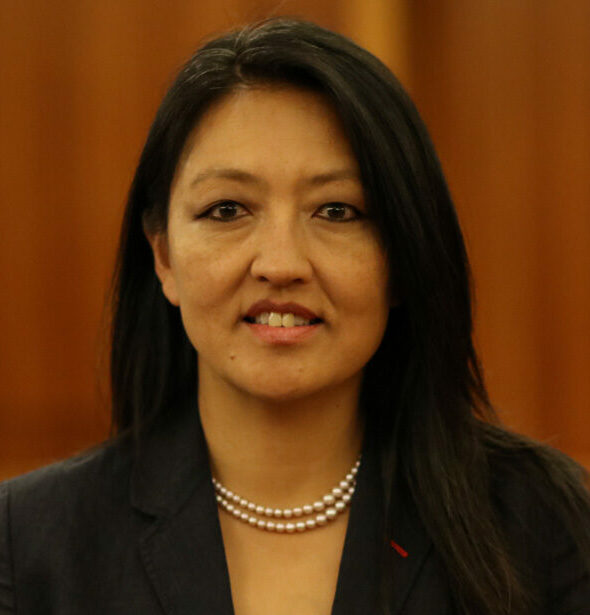
Rosa Kim
Professor of Legal Writing
Suffolk University Law School
In the past year, following an exponential rise in anti-Asian violence and discrimination in the U.S., we wrote an essay about inclusion of Asian American faculty in legal academia. We discussed harmful stereotypes and myths about Asian Americans. We called on the legal academy to do more to acknowledge and address the challenges faced by Asian American faculty and to amplify their voices, work, and presence.
Law schools must also do the same for Asian American students in U.S. law schools.
Asian Americans have often been viewed and treated as a single homogenous group. And yet the story of Asians in America is one of rich diversity. Today more than 20 million people who identify as Asian American live in the U.S.[1] The term Asian American encompasses at least 21 distinct groups.[2] In 2019, people who identify as Chinese, Indian, Filipino, Vietnamese, Korean, and Japanese accounted for 85% of Asian Americans.[3]
Asian Americans are diverse economically. The disparities in income across Asian American households are among the widest in the country. While Asian American households in the U.S. had a median annual income of $85,800 in 2019—higher than the $61,800 among all U.S. households—most groups of Asian Americans report household incomes well below the national median for Asian Americans.[4] For instance, Burmese American households have a median income of $44,400.[5]
Unsurprisingly, Asian American law students[6] are diverse. LSSSE survey data about Asian American students dispels the monolith myth and reveals the need for law schools to act to provide support for all Asian American students. LSSSE’s recent report of Asian American law students is aptly named Diversity within Diversity: The Varied Experiences of Asian and Asian American Law Students.
Within the group of Asian American law students surveyed, 81% of respondents comprised six ethnic groups: Chinese, Korean, Indian, Filipino, Japanese, and Vietnamese.
International students of Asian descent are a growing cohort in U.S. law schools. By far, Chinese respondents were more likely than any other group to be international students; 50% percent of them identified as international students, while just 1% of Filipino respondents identified as international students.
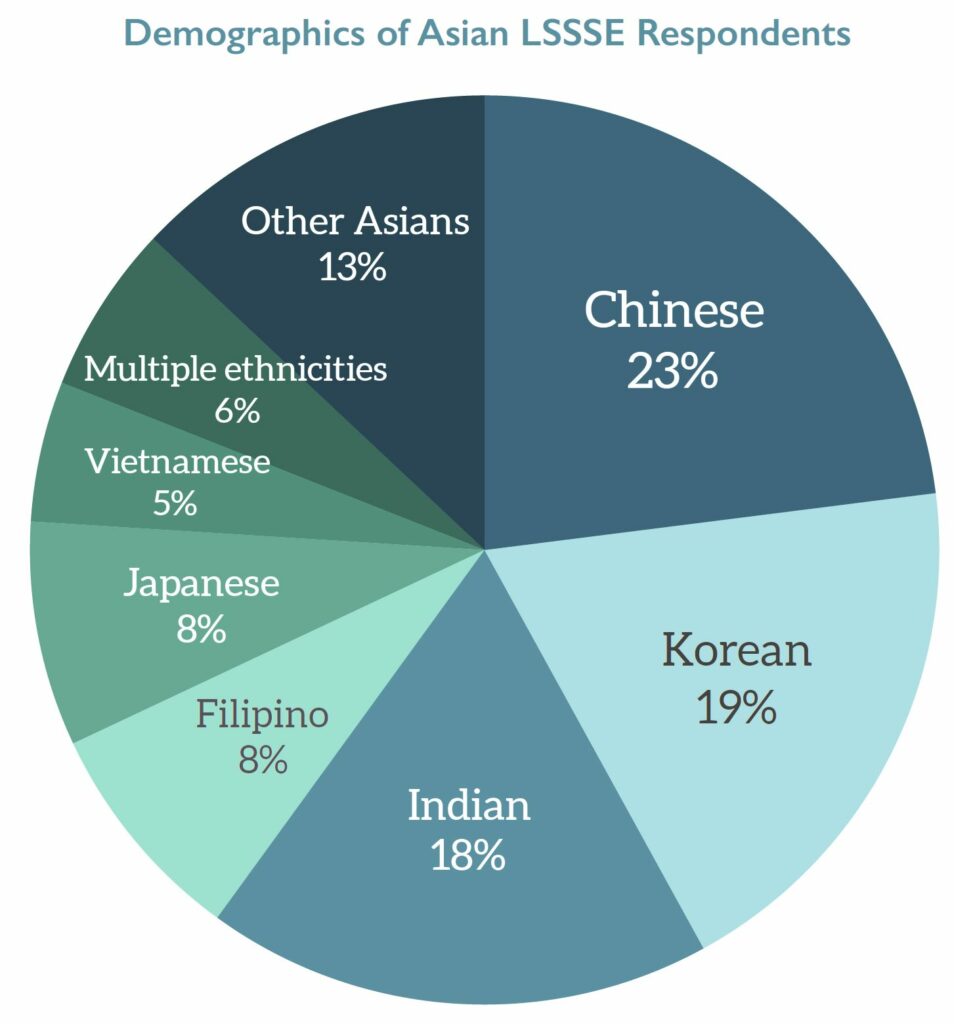

In the areas of LSAT scores and parental education levels, the LSSSE uncovered dramatic differences across ethnic subgroups. About 1 in 3 Chinese respondents had LSAT scores above 160. As a point of comparison highlighting the Asian American diversity, fewer than 1 in 11 Vietnamese respondents had scores at that level. Only 41% of Vietnamese law student respondents had at least one parent with a BA/BS or higher, in contrast with 81% of Indian law student respondents and 78% of Filipino law student respondents.
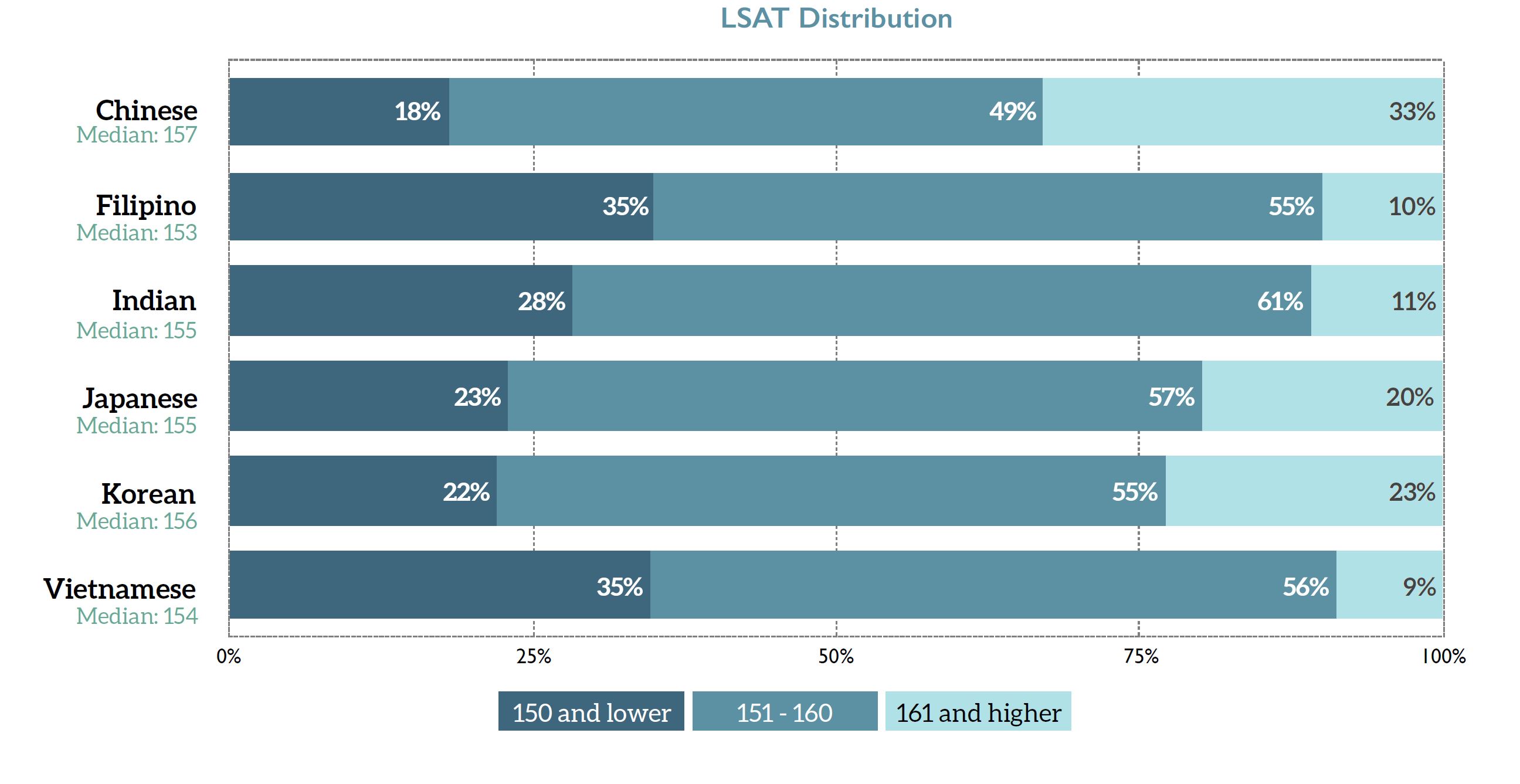
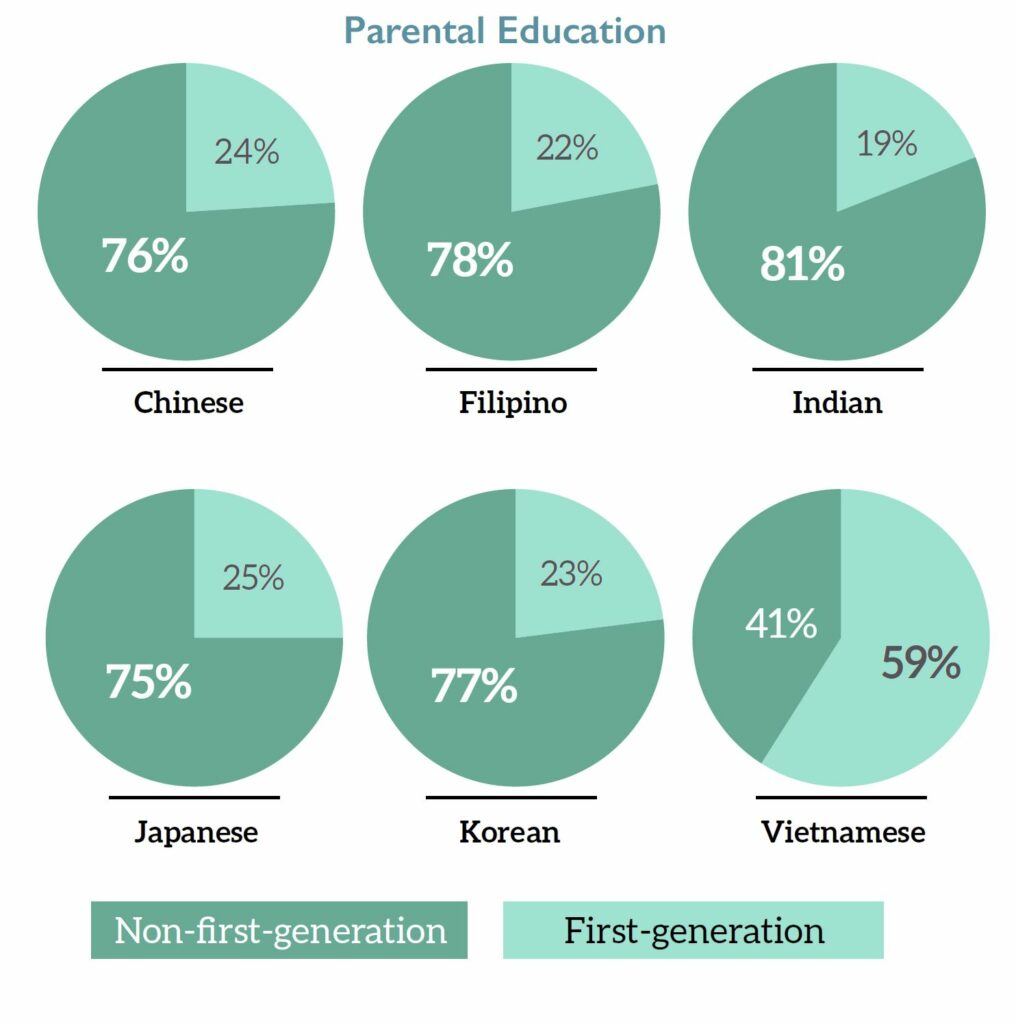
Law student debt expectation also varies significantly across ethnic subgroups. Only 15% of Chinese respondents expected to have more than $120,000 in debt after law school, compared with 51% of Filipino respondents and 44% of Vietnamese respondents. (The disparity could be explained in part by the prevalence of international students among certain respondent subgroups. 50% of Chinese respondents identified as international, while only 1% of Filipino students did. As LSSSE notes, international students are twice as likely to expect no law school debt than domestic students.)
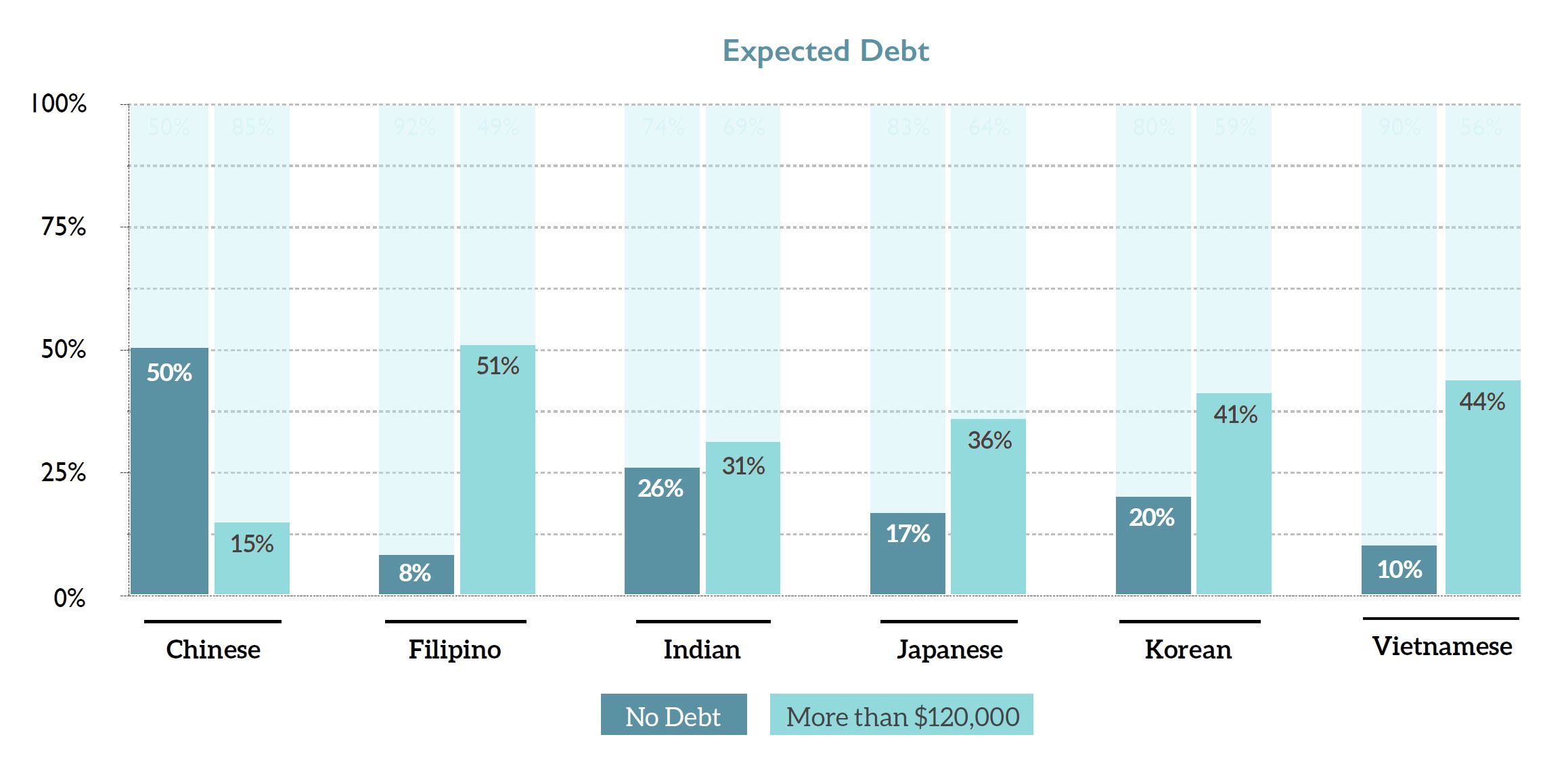
With regard to Asian American law students’ perceptions regarding law school support, Asian American law students generally do not feel they receive law school support to cope with non-academic responsibilities. Thirty-five percent of Chinese respondents and only 21% of Vietnamese respondents felt that support was provided.

Given the LSSSE data, viewing Asian American law students as a monolith–as, for example, a group that finishes law school incurring little debt and that is a “model minority” with LSAT scores in the highest percentiles–would be a mistake. Doing so would miss the mark by a long shot in ensuring effective support of Asian American law students. Appreciating the diversity and broad scope of Asian American experiences is a prerequisite to pursuing equity and inclusion of all Asian American law students.
In our essay this Spring on inclusion of Asian American law faculty, we provided an aspirational checklist of self-assessment questions for law schools. We provide here a complementary list of self-assessment questions for law schools seeking to support Asian American law students.
- Are there Asian American deans, associate deans, or faculty at the law school that Asian American students can look to for support?
- Does the law school work to connect Asian American law students with Asian American mentors within and outside of the law school?
- Are Asian American students encouraged to pursue judicial clerkships and other government job opportunities?
- Are Asian American students receiving mentorship for leadership and being suggested for leadership positions and other recognition at the law school?
- Do Asian American students feel supported in their efforts to pursue law school studies while managing financial need and family care responsibilities?
- Is providing faculty support to Asian American students valued and does the institution acknowledge and account for this additional faculty work for supporting Asian American students?
- Does the curriculum include Asian American law courses, and is Korematsu v. U.S. taught in a mandatory course?
- Does the law school offer co-curricular activities, like journals, competition teams, or study-away programs, related to Asian American law?
- Has the impact of current events and law school policies on Asian American students been discussed and included as part of the work of the DEI committee or staff?
- Are Asian American students invited to participate on DEI and other law school committees and encouraged to advocate for themselves?
The Diversity within Diversity report is a laudable step towards documenting the vast diversity among Asian American law students. Disaggregating the data for Asian ethnic subgroups–done for the first time through this 2016 survey–helps to reveal the scope of this diversity and illustrates the need for more research about law students of Asian descent. On the occasion of Asian American and Pacific Islander Heritage Month, we urge law schools to share this data with their communities and engage in a self-assessment to identify areas that need attention.
____
[1] See Abby Budiman and Neil Ruiz, Key facts about Asian origin groups in the U.S., PEW RSCH CTR (Apr. 29, 2021), https://www.pewresearch.org/fact-tank/2021/04/29/key-facts-about-asian-origin-groups-in-the-u-s/.
[2] Id.
[3] Id.
[4] Id.
[5] Id.
[6] The term Asian American used in reference to law students described in the LSSSE data includes international students of Asian descent.
